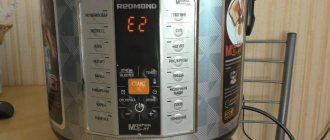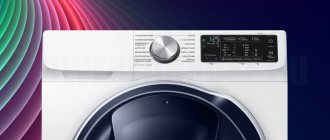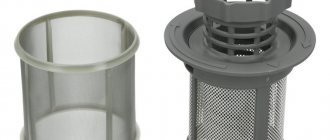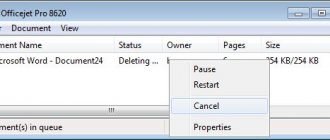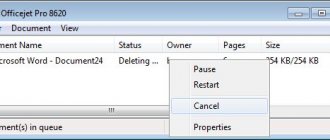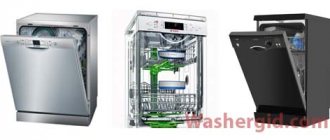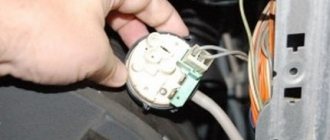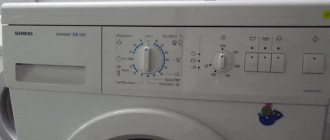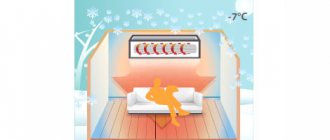General Climate, or GC, brand air conditioners do not cause problems to their owners for quite a long period after purchase. But still, like any equipment, they are subject to wear and malfunction. Depending on the model, errors of General Climate air conditioners are displayed on the remote control screen or displayed through various combinations of light indications on the built-in display of the indoor unit.
After reading the article we have proposed, owners of climate control equipment of this brand will know what the appearance of certain symbols on the display means, and will also learn to understand the numerous combinations of indicator signals on the internal unit of the product.
The information collected and presented by us will help equipment owners understand how to eliminate errors and teach them what to do correctly in the event of one or another malfunction.
Types of air conditioner malfunctions
Chinese TCL air conditioners have proven themselves well in the world market as inexpensive and reliable climate control equipment.
But periodically they also fall into disrepair and require comprehensive repairs. All malfunctions of TCL split systems can be divided into:
- errors in voltage, current or temperature sensors;
- EEPROM firmware malfunctions;
- problems with the indoor unit motor;
- changes in interblock connections;
- emergency stop errors.
You can find out that there is a malfunction in the operation of the device thanks to the indicators on the housing of the air conditioner and split system or the information displayed on the display. Those. sometimes the timer LEDs, previously lit with a steady light, suddenly begin to blink (chaotically or in a certain order), and sometimes an alphanumeric combination appears on the display.
It is important to correctly identify the combinations of letters and numbers that appear on the display of the TCL air conditioner in order to determine the repair and completely repair it.
When an error indication appears, much depends on exactly when the malfunction occurred. If a breakdown of the air conditioner was discovered during installation of the device (and the installation of the equipment is carried out by a representative of a company accredited by the manufacturer), the owner of the split system may require replacement of the product.
If malfunctions in the operation of the air conditioner occur several months or years after installation, the device will need to be repaired at a service center or repaired yourself.
Self-diagnosis system of modern air conditioners
New generation household appliances are usually equipped with a self-diagnosis system designed to detect malfunctions and errors in operation when they first appear. The self-diagnosis system is a unified network of sensors that monitor the condition of a particular working unit of the unit.
When the air conditioner is turned on, the sensors automatically start working and continue to perform their functions in continuous mode until the device is disconnected from the power supply. Sometimes, to eliminate malfunctions and errors, the owner of the air conditioner only needs to perform simple actions himself, but sometimes he has to invite specialists from the authorized General Climate service.
Let's consider possible errors and their codes in various models of air conditioners and split systems GC, the reasons for their occurrence and methods of elimination. We will try to figure out in which cases manual actions are appropriate, and in which cases an experienced craftsman should be invited.
GC air conditioners are equipped with a modern self-diagnosis system, which sends signals in the event of failures and operating errors to the control module
When the operating parameters of the node on which the sensor is installed change, an error signal is immediately sent to the control module, which is displayed on the device display. If necessary, the control module also blocks the equipment to avoid incorrect operation of the air conditioner and its final breakdown.
Fault codes for different models of General Climate air conditioners may differ from each other. Let's try to look at the codes of each model in detail.
Digital codes on the remote control
| E2 | Indoor air temperature sensor is shorted or broken |
| E3 | Evaporator temperature sensor is shorted or broken |
| E4 | Condenser temperature sensor is shorted or broken |
| E5 | Drain pump error (engine overheated) |
| E6 | External unit protection (phase reversal, phase loss, thermal protection) |
| E7 | EEPROM error |
| E8 | Drain pan overflow protection (more than 3 minutes) |
Determining a malfunction by flashing indicators
| Flashing indicators | Malfunction | Note |
| operation+timer+def/fan | Compressor overcurrent detected, more than 4 times in one hour | Resetting the error by turning off the power |
| water alarm LED (flashing) | The float detected an increase in the level of condensate in the pan, no more than three minutes | The drainage pump is forced to turn on |
| water alarm LED (on) | The drain float does not lower for more than 3 minutes | The air conditioner goes into trouble, reset by turning off the power |
| def/fan (pre/def) | Condenser temperature sensor is shorted or broken | When the cause is eliminated, the air conditioner automatically resumes operation. |
| all indicators flash | External unit error - phase loss or phase reversal, thermal protection | |
| timer | Indoor air temperature sensor broken or short-circuited | |
| operation | Evaporator temperature sensor error - shorted or open | |
| operation+timer | EEPROM error | Change the control board |
Error codes for S-HR series split systems
Models: S07HR S09HR S12HR S18HR S24HR
| X - not lit ☆ - Flashing at a frequency of 5Hz On - constantly lit | ||||
| Models 07, 09, 12, 18 | ||||
| Operation | Timer | Defrosting | Auto | Description of the malfunction |
| ☆ | X | ☆ | — | Compressor overcurrent protection tripped 4 times |
| X | ☆ | ☆ | — | The indoor unit fan does not work for more than 1 minute. |
| ☆ | ☆ | ☆ | — | No compressor start |
| X | X | ☆ | — | The pipe temperature sensor on the indoor unit does not work |
| X | ☆ | X | — | The room temperature sensor on the indoor unit does not work |
| On | ☆ | X | — | Error (failure) EEROM |
| Model 24 | ||||
| Operation | Timer | Defrosting | Auto | Description of the malfunction |
| ☆ | ☆ | ☆ | ☆ | Compressor overcurrent protection tripped 4 times |
| X | ☆ | X | X | The room temperature sensor on the indoor unit does not work |
| ☆ | X | X | X | The pipe temperature sensor on the indoor unit does not work |
| X | X | ☆ | X | The temperature sensor on the outdoor unit does not work |
| X | X | ☆ | ☆ | The protection of the outdoor unit has tripped (for 380V) or the thermistor of the outdoor unit does not work |
| X | X | X | ☆ | EEROM processor error (failure) |
Models: S30HR S36HR
Indoor unit errors
| Indoor unit indication | |
| LED indication | |
| Operation, Timer, Defrosting flash at 5 Hz | Four starting attempts in 1 hour with increased operating current |
| Timer flashes at 5 Hz | Open or shorted room temperature sensor |
| Operation flashes at 5 Hz | Broken or shorted pipe temperature sensor |
| Defrosting flashes at 5 Hz | Open or short circuit of outdoor unit sensor |
| Operation, Timer, flashing at 5 Hz | EEPROM error |
| Defrosting, AUTO, flashing at 5 Hz | Outdoor unit error |
| AUTO flashes at 5 Hz | Interconnect error |
| External unit errors | |
| Outdoor unit indication | |
| LED indication (number of flashes at 2 second intervals) | |
| 5 flashes | Interconnect error |
| 4 flashes | Phase rotation error (3-phase model) |
| 3 flashes | High pressure |
| 2 flashes | Temperature sensor, open or shorted |
| 1 flash | Indoor unit malfunction |
| Constantly on | Normal operation |
Fault codes for three-phase air conditioners
| LED1 | LED2 | LED3 | |
| off | off | on | Normal operation |
| on | off | on | Incorrect phase rotation |
| off | on | on | overcurrent |
| on | on | on | one or two phases missing, phase imbalance |
| on | on | on | pressure protection in the refrigeration circuit |
| LED1 | LED2 | LED3 | |
| flashing | off | off | Incorrect phase rotation |
| flashing | off | off | one or two phases missing, phase imbalance |
| flashing | flashing | off | pressure protection in the refrigeration circuit |
| off | off | flashing | overcurrent |
| off | flashing | flashing | outdoor unit pipe thermistor |
| off | flashing | off | outdoor unit thermistor by air |
| flashing | flashing | flashing | High condensation temperature protection |
SPECIAL OFFER! For owners of commercial facilities and corporate customers, we carry out diagnostics and draw up a plan of repair and restoration measures for your engineering equipment individually, taking into account your wishes and recommendations of equipment manufacturers. Read more.
Mitsubishi
What a specific air conditioner error means directly depends on which series the selected equipment belongs to.
For Mitsubishi Electric, the code that appears shows:
- E0, E36 problems with the control panel;
- E1, E2: problems with the control board;
- E9, EE: communication between the air conditioner units inside and outside is lost;
- Fb: the board that controls the capacitor has failed;
- P2: failure of the sensor that controls the TH5 heat exchanger;
- P5: drain pump failure;
- P6: overheating or freezing of equipment;
- P9: incorrect sensor that controls the TH2 heat exchanger;
- U1, Ud: equipment overheating or pressure increase;
- U2: low refrigerant in the refrigerant circuit;
- U3, U4: problems with the capacitor temperature sensor, short circuit;
- U5: the temperature of the condenser does not correspond to the set parameters;
- U6: problems with the power module, forced blocking of the compressor;
- U7: insufficient refrigerant;
- U8: condenser fan stopped;
- U9, UH: insufficient or excessive voltage in the power system, current sensor is faulty;
- UF: compressor jammed;
- UP: The compressor has stopped.
For Mitsubishi Heavy, the air conditioner errors are slightly different:
- E1: problems with the control panel, incorrect operation of the evaporator board;
- E32: broken connection, incorrect phase connection;
- E35: the condenser temperature has increased or the temperature sensor is faulty;
- E36: the air leaving the air conditioner is heated above the user-set value;
- E37: condenser temperature sensor is faulty;
- E39: problems with the discharge pipe temperature sensor;
- E5: capacitor control board is faulty;
- E54: low pressure sensor connection required;
- E57: coolant level below the set value;
- E59: compressor cannot be started;
- E6: evaporator sensor does not work;
- E60: adjustment of the compressor position is required;
- E63: the evaporator has emergency shutdown;
- E7: evaporator sensor does not work;
- E8: evaporator overloaded;
- E9: the drain pump does not work.
Toshiba
The remote control for Toshiba Ras cooling systems also has a “CHECK” button, which enables self-diagnosis of the unit.
Codes for problems in Toshiba household air conditioning systems (Toshiba RAS-07S3KHS-EE/RAS-07S3AHS-EE, Toshiba RAS-10EKV-EE / RAS-10EAV-EE):
These values also apply to devices RAS-10SKHP-ES, RAS-13SKHP-ES, RAS-13S2AH-ES, RAS-07S2AH-ES, RAS-10S2AH-ES, RAS-07SKHP-ES and others.
Fault codes for Toshiba industrial air conditioners:
General error codes
ERROR CODES
General fujitsu air conditioner error codes - explanation and instructions
By carefully studying the error codes of General Fujitsu air conditioners on the display, each user can eliminate minor problems without the help of a specialist. If the error code of the General fujitsu EE air conditioner is displayed on the control panel, you must simultaneously press and hold the “energy saving” and “mode change” buttons for at least three seconds . Error codes will appear on the monitor:
- stop operating the equipment;
- General Fujitsu air conditioner error scanning is started by simultaneously pressing the “master control” and “fan” buttons for two seconds;
- To stop scanning, press the start button.
Self-diagnosis mode
You need to stop operating the equipment, press the “temperature” button and hold for 5 seconds.
Self-diagnosis has begun. General fujitsu air conditioner error codes
| Error code | What does it mean |
| 00 | There is no connection between the indoor module and the control panel |
| 1 | There is no connection between indoor and outdoor modules |
| 2 | The temperature sensor that measures the temperature in the room is malfunctioning |
| 3 | Indoor module temperature sensor short circuit |
| 4 | Indoor module temperature sensor disabled |
| 5 | Damage to the temperature sensor of the indoor module |
| 6 | No external heat exchanger connection |
| 7 | External heat exchanger sensor short circuit |
| 8 | Not enough power |
| 9 | The condensate container is full |
| 0A | There is no contact with the temperature sensor of the external module |
| 0V | Short circuit on the temperature sensor of the external module |
| 0C | Thermal sensor does not function |
| 0D | There is a short circuit on the temperature sensor tube |
| 0E | Pressure too high |
| 0F | Breakdowns on the temperature tube |
| 11 | No connection to compressor |
| 12 | Broken indoor module fan |
| 13 | Main board does not respond |
| 14 | There is no connection with the room temperature sensor. |
Error indication for General Fujitsu air conditioners
| What does General fujitsu air conditioner error mean? | Indication | |||
| OPERATION | TIMER | AIR CLEAN orQUIET | ||
| Connection failure | Between external and internal module | —— | 2-3 blinks | ———— |
| Indoor module temperature violation | The temperature sensor in the room is not working correctly | 2 flashes | 2 flashes | ———— |
| The heat exchanger temperature sensor is not working correctly | 2 flashes | 3 flashes | ——— | |
| Outdoor module temperature violation | The temperature sensor of the discharge pipe is not working correctly | 3 flashes | 2 flashes | ——— |
| The heat exchanger temperature sensor is not working correctly | 3 flashes | 3 flashes | ——— | |
| The external temperature sensor is not working correctly | 3 flashes | 4 flashes | ———— | |
| Two way valve thermistor failure | 3 flashes | ———— | 2 flashes | |
| Three way valve thermistor failure | 3 flashes | ——— | 3 flashes | |
| Radiator temperature sensor | 3 flashes | 7 flashes | ———— | |
| Compressor temperature sensor | 3 flashes | 8 flashes | ——— | |
| Indoor module control system failure | Manual auto button broken | 4 flashes | 2 flashes | ——— |
HOME | SERVICES | TRADEMARK LESSAR | VENTILATION | AIR CONDITIONING | REFRIGERATION | CONSUMABLES | ERROR CODES | ARTICLES | CONTACTS | VACANCY | Online APPLICATION | Home Site Map
LG
In LG air conditioning systems, the microprocessor, when any problem is detected, blocks the unit from starting, after which it sends signals by flashing the LED, which indicate the error code.
If the system has detected several problems, then the failure that has the lowest serial number is induced first. After that, faults are indicated in ascending order. The table below lists the error codes for LG air conditioners and explains what each of them means.
You should know: the occurrence of similar errors can be caused by unsatisfactory parameters of the electrical network, or an accidental failure that occurred in the electronics of the unit. Therefore, do not rush to contact service immediately, but simply turn off the power to the device and check the electrical voltage. You also need to make sure that the device operating mode is selected correctly. After these checks, you can turn on the device. Most often, this method helps in solving this problem, and it no longer appears.
The set of fault symbols detected by the microprocessor depends on the unit model. For LG air conditioners there may be another indication - in the form of numbers and letters.
Evaporator unit malfunctions:
Indications of defects in the capacitor unit:
Designations in LG Art Cool units:
Air conditioner lines
The Russian-British corporation produces all types of modern air conditioners. The types differ in design complexity and power, which opens up unlimited possibilities for their application.
Monoblocks
Distinctive features: simple design, ease of installation, small coverage. Monoblocks differ from other varieties in their low weight (compact, compared to other types).
General Climate monoblocks are produced in the following series:
- window air conditioners GCW 05 and 07;
- mobile (portable) GCP 09 and 12.
They differ in functionality (auto-restart, self-diagnosis), power (up to 30 sq. m), and have several operating modes (auto, timer, night). The main drawback is the noticeable noise level.
Recently, the company began to produce high-temperature GC/GU-CHT and monoblock-type PHT for industrial premises with high temperatures (up to +70 C). As well as the Gart roof series.
Split systems
Consist of an internal and external block. Installation will require professional assistance, as will dismantling. Correspond to the class of energy-efficient devices (class A). Not only do they cool, but they also have a heating function.
The General Climate split system comes in different types:
- traditional (classic) split systems of the Standart, Alfa-neo, Flagman series,
- systems with UV air purification GC-EAF07UVN1, GC-EAF09UVN1, GC-EAF12UVN1,
- inverter air conditioners Africa and EAR09HRN1-RBTI ARTISTO series,
Commercial semi-industrial
General Climate produces:
- 4C cassette air conditioner for rooms with a suspended ceiling, the indoor unit (fan coil) is located between the ceiling and the suspended structure;
- DN duct air conditioners for cooling several rooms (the system consists of a network of air ducts with grilles and an indoor unit with a powerful fan);
- column GC-FS for large rooms – up to 200 sq.m. m (halls, halls, in production), easy to install (the internal block is similar to columns);
- floor-ceiling CF provide uniform cooling by directing a powerful stream of air along the ceiling and walls;
- universal external units of the U series for rooms of any size, installed outside, characterized by high performance and durability.
Multisplit systems
The most complex design includes several indoor units to serve adjacent rooms. They are used in offices, factories, and residential buildings. Different types are also produced: non-inverter MA series, inverter Free Multi.
General Climate multi-split systems are famous for their ease of maintenance and convenient control, but when directly comparing the characteristics with competitors, they clearly lose. The manufacturer compensates for the difference with an affordable price.
Multizone
vrf and vrv systems for buildings of any size and number of floors. They have an external unit and three internal ones (duct, cassette, and the third is either floor-ceiling, or wall-mounted, or high-power duct) or two external and two internal. Recently, a series of precision COOLSERV has been produced - designed to create safe working conditions in technical rooms, with machines and computer equipment, provides direct evaporation, and provides the opportunity to install additional equipment.
Compressor and condenser
High-performance devices of the Gacu series operate only in cooling mode, the air exits in one or two directions (vertical and frontal).
It’s worth choosing the General Climate brand: the products are good value for money. General Climate regularly updates its product lines and introduces an innovative approach to the development of new models. Many manufactured air conditioners operate on an ozone-safe hydrocarbon – freon. New products for 2021 include the A09HR air conditioner, equipped with a COLD PLASMA ionizer (with it, the dust in the room becomes half as much in just 10 minutes).
Industrial air conditioners and split systems
Error codes for industrial air conditioners:
- E1 – compressor pressure release;
- E2 – coil malfunction;
- E3 – low pressure of the air conditioning compressor;
- F0 – the temperature meter inside the building has failed;
- F1 – incorrect sensor resistance;
- F2 – temperature protection of the external unit has tripped;
- F3 – temperature sensor circuit is open.
Split installations:
- E1 – high degree of agent protection. Check the pressure;
- E4 – compressor malfunction. Take the temperature reading;
- E5 – AC overload protection has tripped. Check the power cable for short circuit and insulation integrity. Determine the electrical load entering the system;
- E6 – communication failure between the internal and external units of the split air conditioner;
- E8 – temperature exceeded. The system's start LED will illuminate eight times;
- H6 – the internal fan motor does not respond. The system LED will light up eleven times;
- C5 – the Jumper has broken down. Fifteen times light signal. The “cap” should be corrected or replaced;
- F1 – there is no contact or the “environment” device is short-circuited. The temperature element must be replaced.
What do you need to know about repairing and replacing air conditioning systems?
Replacing any air conditioning unit can be one of the largest expenses a homeowner will incur. It's worth making sure this is the right time to upgrade.
Necessary factors when deciding whether to repair or replace:
- The period of operation of the system or air conditioner - if the device was purchased for more than ten years, it is time to replace it.
- Frequency of required repairs - second or third repairs this year? Is the repair price tag approaching half the cost of a new system? Agreeing on issues like these is a reason to stop wasting money on ineffective maintenance and save up for a more modern system.
An example of a modern air conditioner
- Electricity bill – the increase in numbers on the payment receipt from the electric company may be one of the reasons for the increase in the comfort bill during the cold period. Without an increase in the tariff, the numbers became higher than several years ago, which means that due to the longer operational life, the system began to work less efficiently. Constantly increasing energy bills are a sign that your air conditioner has passed its prime.
- Reduced comfort level - it is not difficult to correlate energy costs and the comfort level in the room. Uneven temperature changes, cold air below the user-set limits, failure to receive acceptable heat - all these are signs of the need to replace air conditioning systems.
HVAC error codes
Common error codes on a TCL split system have a standard appearance. At the beginning of the code there is the letter E, followed by a number or a Latin letter.
These combinations mean:
- E0 – code indicating a lack of communication between the internal and external units (to correct the problem, you should check the inter-unit connection, as well as the boards of the external and internal units);
- E2 – indication of malfunction of the evaporator temperature sensor;
- E3 – error code of the condenser temperature sensor;
- E4 – general indicator of system malfunction;
- E5 – indicator indicates type mismatch;
- E6 – error code of the air conditioning indoor unit;
- E7 – combination indicating problems with the temperature sensor of the external unit;
- E8 – error code of the compressor discharge temperature sensor;
- E9 – indicator of a problem with the inverter board;
- EF – indication indicating problems with the fan motor of the indoor unit;
- EA – indicator of problems with the current sensor;
- EE – firmware fault code;
- EP – indication of problems with the compressor shutdown thermostat;
- EU – combination of voltage sensor faults;
- EH – error code for the temperature indicator of the suction pipe.
Emergency stop error codes have different symbols. At the beginning of the code there is the Latin letter P, followed by a number.
These indicators include:
- P1 – indicator of low or high voltage;
- P2 – code indicating problems with overcurrent protection;
- P4 – indication of errors in protection against exhaust overheating;
- P5 – indicator of problems with protection against overcooling in cooling mode;
- P6 – code for problems with overheating protection in cooling mode;
- P7 – indication of overheating protection errors in heating mode;
- P8 – indicator of open overheating or overcooling of protection;
- P9 – code indicating problems with drive protection (as part of program control);
- P0 – module protection error indicator (hardware control).
The error code is a hint. It indicates the direction to look for the problem. If you know what exactly this or that combination means, you can determine in advance whether you should contact the service center or whether there is no need for this.
Error resolution methods
Despite the different error codes in different models of General Climate air conditioners, essentially all the failures and breakdowns in them are of the same type.
Let's consider what the owner of the equipment should do if one or another error occurs:
- Fan stop. If the fan fails to start for more than 1 minute, you should check the connection of the fan motor, as well as its serviceability. If a part breaks, it must be replaced. The air conditioner fan may also malfunction if there are problems with other components. For such diagnostics, it is recommended to invite an experienced technician from a specialized service.
- Problems with temperature sensors. If the self-diagnosis system gives an error for any sensor, it is necessary to check the condition of the part, its integrity and correct connection. For such a check, the owner of the air conditioner will need a multimeter. If the sensor fails, it needs to be replaced.
- EEPROM failure . Sometimes you can get rid of the EEPROM error by simply rebooting the air conditioner. To do this, turn off the power to the device for a few minutes, then turn it on again. If the reboot does not help, the reason is problems with the electronic board. It is also recommended to have a certified repairman perform these repairs.
- The compressor does not start . Typically, compressor problems begin after its filter becomes clogged with dust and debris. The cause of part failure may be overheating, damage to the winding or cable. The owner of the equipment can clean the filter of the device himself, but for more complex manipulations an experienced mechanic will be needed.
- Repeated application of high voltage . If this error occurs, you should first disconnect the air conditioner from the power supply. The error will automatically clear after adjusting the power supply to the device.
- Communication failure between system blocks . Lack of communication leads to blocking of the split system. The owner of the air conditioner can independently check the connection of the inter-unit cable and its integrity. If everything is in order with the cable, then the problem is in the electronic boards of the units, and you need to contact a specialist.
It should be noted that failures and malfunctions in the operation of air conditioners will occur much less frequently with regular preventive inspection of household appliances.
Regular and timely cleaning of equipment and replacement of worn parts will ensure uninterrupted operation of air conditioners and split systems for a sufficiently long period.
Experienced technicians from authorized service centers will quickly and efficiently fix a faulty air conditioner or split system.
To restore the functionality of GC air conditioners and carry out preventive maintenance, mechanics who repair climate control equipment advise seeking help from service centers accredited by the manufacturer, staffed by specialists with the appropriate permits.
General Climate
With the General Climate air conditioner, problems that arise are indicated using an alphabetic and numeric code.
Users encounter the following codes on the display:
- E2. Problems with the sensor that controls the degree of indoor air heating
- E3. Evaporator temperature sensor failure;
- E4. Failure of the capacitor temperature sensor;
- E5. Problems with the sump pump;
- E6. Problems with protection outside.
When using General equipment, the indoor climate can be maintained at an optimal level. By timely servicing the equipment and following the manufacturer’s recommendations, it is possible to significantly increase the service life of the device.
Aux
In case of unstable operation of the equipment, Aux air conditioner error codes help users restore the operation of the equipment. Having seen the alphanumeric designation, it becomes clear to the user where to look for a malfunction.
Air conditioner Aux error codes are presented in the form of letters and numbers. Their content differs from the equipment series. For most units, E1 indicates a problem with the unit's indoor thermistor. E5 indicates a block error outside. Once you see the coded value, you should study the instructions. This will allow you to assess the possibility of performing repair work on your own.
Features of AUX brand air conditioners
Aux split systems, which consumers usually encounter, belong to semi-industrial and household models. Industrial air conditioners are installed mainly in large manufacturing enterprises.
The household and semi-industrial segment of climate control equipment presents the most diverse type and technology of equipment. The company produces conventional and inverter units. The range includes wall-mounted and cassette split systems, mobile floor-standing models, etc.
Wall-mounted systems are usually installed in private houses and apartments, while cassette air conditioners are installed in office, commercial and industrial premises. The quality of AUX air conditioners is highly dependent on the OEM suppliers. It is better to buy Aux equipment from specialized companies. Such companies are more likely to buy high-quality equipment.
Aux air conditioners are presented in several series: FJ, Legend Standart (LS), LS Inverter, Legend Design Inverter and Legend Exlusive Inverter. They are designed for different areas of refrigerated premises. In addition to models with a basic set of functions, there are upgraded versions.
All AUX brand air conditioners are distinguished by their attractive design, versatility and low price, and therefore are popular in the market
Split systems of all AUX series are designed for cooling, heating, dehumidification and ventilation of the room. The cooling function can operate at temperatures from +15 to +43 degrees, and the heating function can operate at temperatures above 0.
It is impossible to run a split system at lower temperatures without additional technical preparation. The operation of climate control equipment at sub-zero temperatures can lead to its breakdown. Also, air conditioning in heating mode is not considered an alternative to heating.
Before starting the air conditioner, you need to check the air temperature in the room and only then turn on this device to the network
There are many varieties of Aux split systems. In terms of functionality, air conditioner models with a similar abbreviation differ little from each other. Their main differences are in appearance, additional features and power.
Main characteristics of Artel air conditioners
Artel is a large manufacturer of household appliances. This Uzbek company has released 4 series of air conditioners: Montana, Shahrisabz, Inverter and Gloria. They differ from each other in appearance and technical characteristics. Split systems of all models have an anti-corrosion housing coating, an LED display and a standard air purification system.
Also included with the device is always a remote control, which is necessary to perform the following actions:
- turning off or turning on the split system;
- activation of night mode;
- changing the level of cooling and heating;
- control of the location of the indoor module curtains;
- display of error codes (this information appears as a result of self-diagnosis).
The equipment is controlled entirely via a remote control. It has a backlight that makes the information easy to read. Split systems are hung on the wall at a height of 2-2.5 meters, so they can only be controlled using a remote control.
Details of the operation and purpose of each button on the remote control of the Artel air conditioner are specified in the operating instructions, which are provided with the device
Air conditioners use safe refrigerant or freon R-410A (a compound of pentafluoroethane and difluoromethane) and R-22 (difluorochloromethane). These air conditioners can operate at temperatures down to -7 degrees Celsius.
To operate as a heating device in winter, the device requires additional technical preparation. The devices are capable of operating in heating, blowing and cooling modes. But Artel split systems do not provide air ionization functions.
Periodic diagnostics of the air conditioner and regular monitoring of its operation will help to find defects in a timely manner and eliminate malfunctions at an early stage.
In the event of breakdowns or malfunctions, the air conditioner generates error codes that indicate a particular malfunction. Thanks to this code, a service center specialist will be able to determine the nature of the breakdown and make repairs. Information about the main characteristics of the air conditioner is indicated in its technical data sheet and operating instructions.
Regardless of the air conditioner model, before the start of each season, you need to do a comprehensive check and maintenance of the device. This includes cleaning the outdoor unit and checking the refrigerant level. But a split system can malfunction even if the equipment is fully operational.
In order for owners of climate control equipment to independently determine the cause of the malfunction and choose a way to restore operation, the manufacturer provides error options in the technical documentation
In addition to this information, the user manual contains information:
- about the area of the serviced premises;
- about the selling price;
- about power;
- about temperature conditions;
- about overall dimensions (this information is needed to select the installation location of the equipment);
- about the availability of additional operating modes (night, timer, Turbo, etc.).
These parameters must be taken into account when installing the air conditioner. The efficiency of the equipment depends on them. If you install a low-power split system in a large room, it will not be able to fully provide its cooling. Because of this, when installing an air conditioner, you need to carefully study the instructions and characteristics so as not to have problems with its operation in the future.
Instructions for the control panel and General Climate air conditioners
The manufacturer has developed a manual for each series of household and semi-industrial appliances. The distinctive features of a particular model (technical characteristics) are indicated in the passport. The instructions for General Climate air conditioners contain recommendations for operation, management, sections “Installing a General Climate air conditioner”, “Maintenance”, troubleshooting methods, a description of the device (what is included in the kit is shown in schematic form), care recommendations (how to clean the body, the process filter cleaning).
We advise you to carefully study the safety precautions. Violation of the rules may lead to the device turning off (the air outlet openings must not be blocked). If you do not plan to use the device for a long time (for example, throughout the winter), remove the plug from the outlet and the batteries from the remote control. The power should be turned on 12 hours before launch; this method of connecting to the network contributes to the efficient and smooth operation of the device.
- adjust and change the direction of air flow at any time,
- set the temperature regime, create comfortable conditions (set exactly as many degrees as needed by family members or employees in the room).
The filter must be cleaned 2 times a week; clean it with a vacuum cleaner or rinse it with clean water, placing it with the outer side down. Before cleaning, you need to turn off the power, disassemble the air conditioner: remove the cover and remove the filter.
Gree
The reasons for the failure of Gree air conditioners can be very diverse.
The following codes may be displayed on the display:
- E0 – E5, E8, E9: activation of the protection system of various modules;
- E6: cable conductivity problems;
- E7: deviation from established operating modes;
- F0 – F4: malfunction of temperature sensors on various modules;
- F5: malfunction of the sensors that control the operation of the discharge tube of the Gree air conditioning compressor;
- F7: lack of oil;
- F8: system overload;
- FF: lack of power on one of the phases;
- FH: evaporator freezing;
- H0, H3: overheating;
- H1: defrost;
- H2: problems with the electrostatic precipitator;
- H4: system failure;
- H6: Fan motor does not send signal;
- H7: Compressor problems.
Error codes on displays
Some errors can be corrected yourself. To eliminate others, you will have to contact a specialist:
- operation+timer+def/fan – too much voltage is supplied to the compressor more than once every 15 minutes. The air conditioner should be unplugged from the electrical outlet;
- water alarm LED (blinking) – there is too much water in the condensate container for no longer than 3 minutes. The sump pump must be started manually;
- water alarm LED (constantly lit) – the container is overfilled for more than 3 minutes. The device is in emergency mode. In order to clear this error code, you should disconnect it from the electricity supply;
- def/fan (pre/def) – no contact with the temperature sensor on the condenser. The device will start working as soon as the temperature sensor turns on;
- All the lights are blinking - a malfunction of the outdoor unit (overheating or hypothermia, power failure);
- Timer – short circuit or no contact with the internal temperature sensor;
- Operation – there is no contact with the temperature sensor on the evaporator or there is a short circuit in it;
- operation+timer – contact failure with EEPROM. You cannot fix this error yourself, since you need to install a new control board.
